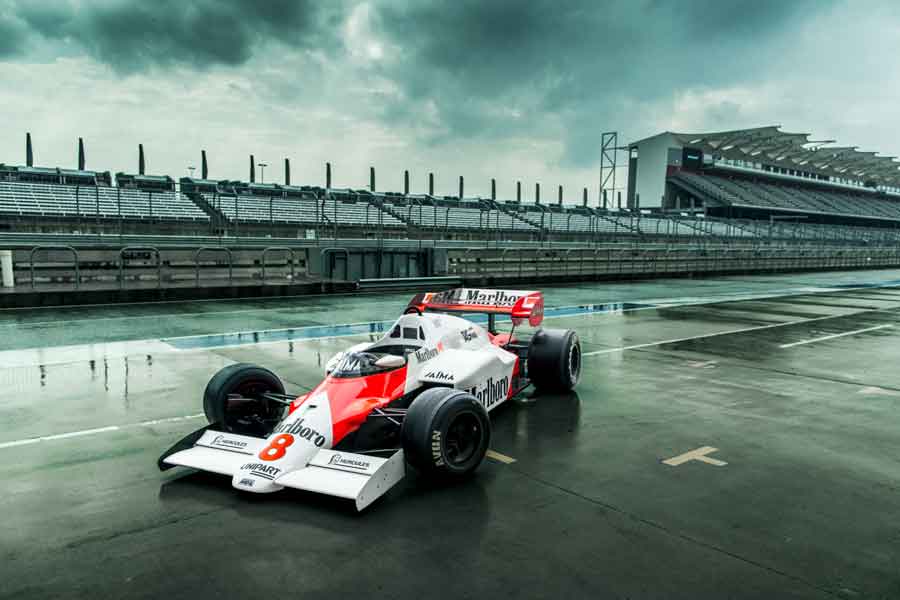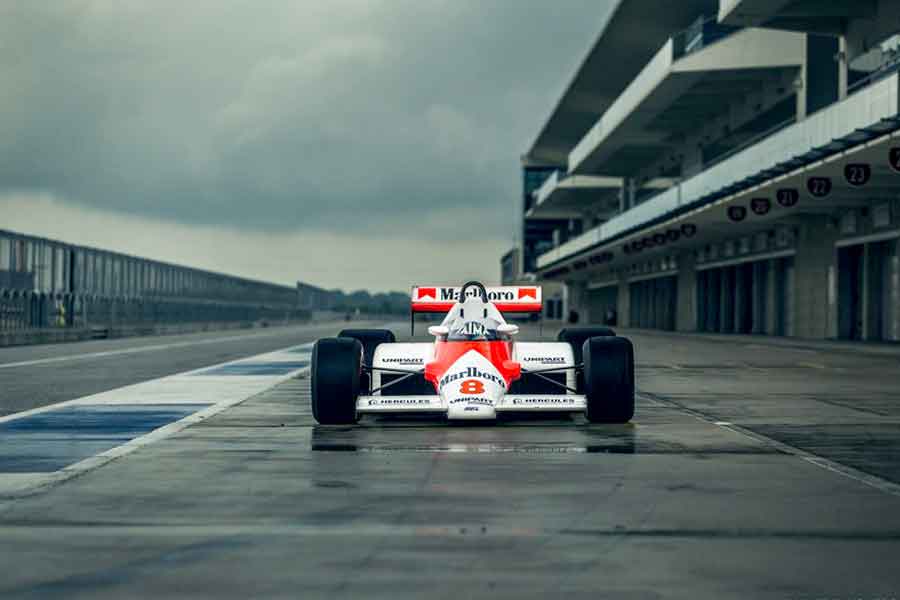McLaren MP4/2 - Barnard's Masterpiece Driven by Two Legends
The McLaren MP4/2 was a car which was a dominant force in the 1984 Formula 1 World Championship and ended the season by winning both trophies.
McLaren MP4/2 was quite revolutionary car
The new car was designed by John Barnard is credited with the introduction of two new designs into Formula 1 – carbon fiber composite chassis and later the semi-automatic gearbox. The chassis of the McLaren MP4/2 was completely made of carbon fiber and was powered by the new TAG-Porsche V6 engine that was tested by Niki Lauda at the 1983 Dutch Grand Prix. The German manufacturer had not been involved in Formula 1 for more than a two decades but its knowledge of turbocharged engines made them the perfect partner for McLaren. One of the other major advantages of McLaren MP4/2 was carbon brakes, used by very few teams at the time.
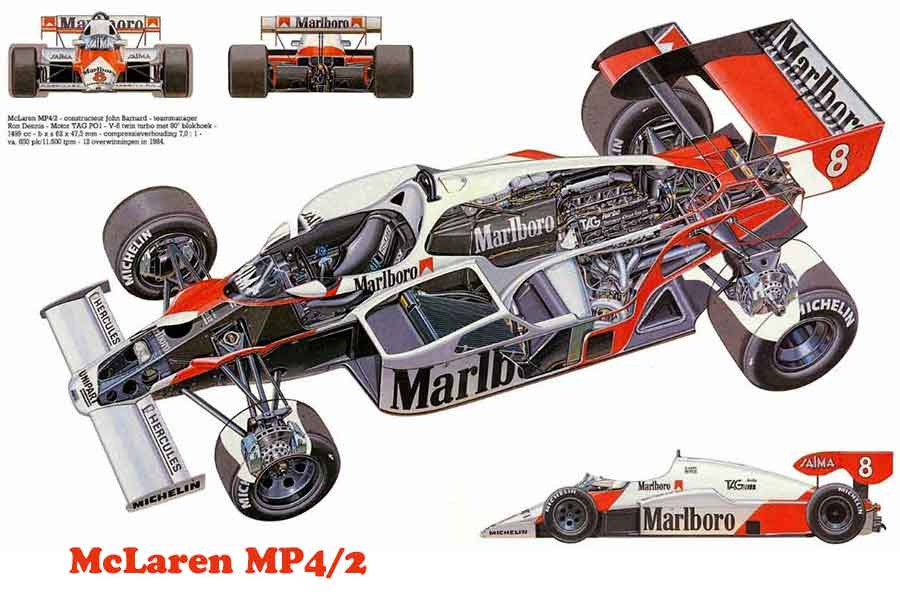
McLaren MP4/2 cutaway
The development of the car was long and complex but the final result was fantastic. The McLaren MP4/2 was absolutely dominant to the rest of the grid during the 1984 campaign while Alain Prost and Niki Lauda battled for the Drivers’ Championship title until the very last lap of the season.
Unimpressive in qualifications, dominant in races
Interestingly, McLaren MP4/2 easily took both trophies in 1984 even after had a total of 11 retirements – five by Prost and six by Lauda. Over the season both McLarens failed to finish a race only on two occasions in Belgium and Dallas. Another interesting fact is that McLaren MP4/2 won just three pole positions that year – all by Prost. The reason is that they were the only top team not using special engines for qualifying sessions.
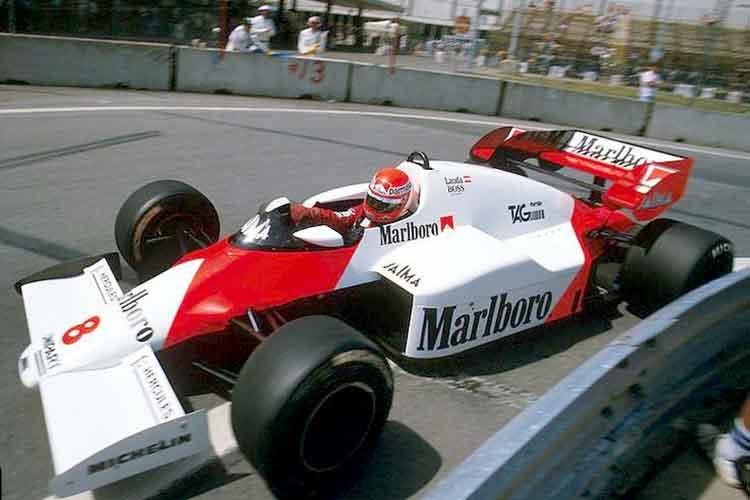
Niki Lauda, Marlboro McLaren-TAG MP4/2, 1984 Detroit Grand Prix
Lauda recorded more fastest laps than his teammate – five compared to three scored by the less experienced Frenchman. Only twice that year McLaren MP4/2 was beaten on pure pace. Michele Alboreto in Ferrari triumphed in Belgium while Nelson Piquet won the Canadian Grand Prix.
Lauda won the third Formula 1 title thanks to his experience
Niki Lauda won the title that year, his third and last, although he had less number of wins than Prost. The Austrian triumphed in South Africa, France, UK, Austria, and Italy while Alain Prost was the winner in Brazil, San Marino, Monaco, Germany, the Netherlands, Portugal, and also won the European Grand Prix.
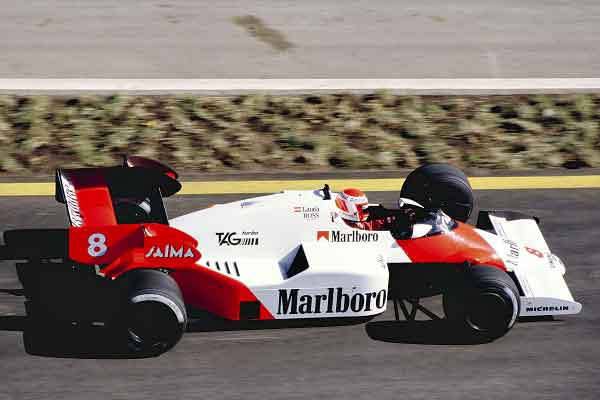
Niki Lauda,McLaren MP4/2 Tag Porsche, 1984 Formula 1
The season of 1984 was the closest in the history of Formula 1. Lauda eventually prevailed by half a point what is the smallest margin in F1 history. Before the final round of the season, Prost needed a victory to become a champion but he also needed Lauda to finish no better than 3rd. The Frenchman won the race but Lauda finished 2nd and clinched the title. That was team’s fourth 1-2 finish in 1984.
In 1984 McLaren scored more points than Ferrari, Lotus and Brabham together
With 12 wins out of 16 races and with a total of 18 podium finishes, McLaren MP4/2 is one of the most successful cars in the history of the F1 Championship. McLaren-TAG won the Constructors’ Championship title that year with 143.5 points on the account, having 86 points more than Ferrari, their closest rival.
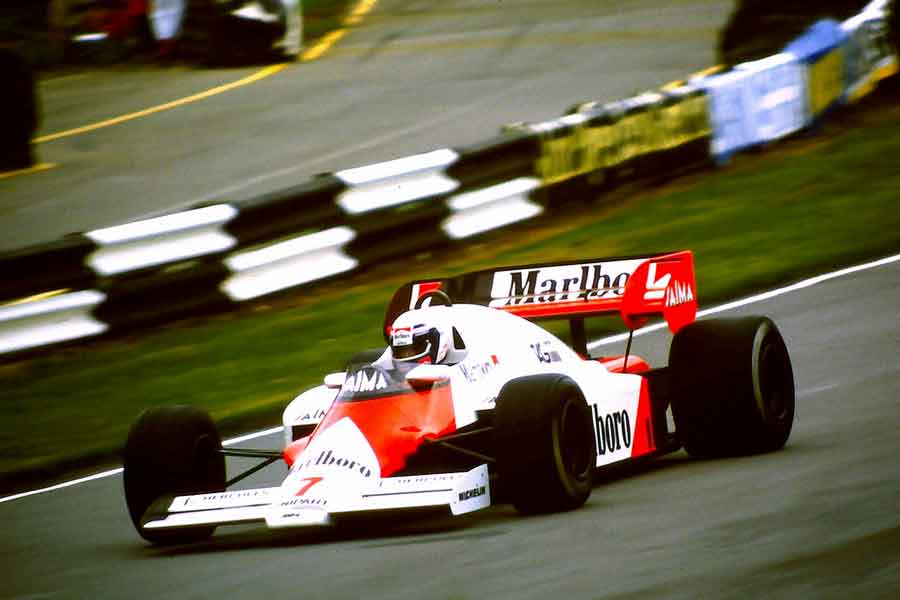
Alain Prost in McLaren MP4/2, 1984 British Grand Prix
At the same time, that was McLaren’s second Constructors’ Championship title and third triumph in the Drivers’ Championship.
McLaren MP4/2 technical specifications
| Overall length | 4.343 mm |
| Overall width | 2.133 mm |
| Overall height | 991 mm |
| Weight | 540 kg |
| Chassis | Carbon fiber with aluminium honeycomb monocoque |
| Suspension (front & rear) | Double wishbones, pushrod and rocker actuated coil springs over dampers |
| Wheelbase | 2.794 mm |
| Track (front & rear) | 1.803 mm / 1.651 mm |
| Engine | TAG-Porsche TTE PO1, 1.499cc, 90° V6 turbo, mid-engine, longitudinally mounted |
| Power | 800 bhp / 597 kW at 11.000 rpm |
| Gearbox | McLaren / Hewland 5-speed manual |
| Brakes | Ventilated carbon ceramic discs |
| Tires | Michelin |
| Fuel | Shell |
Video – McLaren MP4/2 driven by Jenson Button at Goodwood Festival of Speed
Photo: jeremycliff.com, primotipo.com, pinterest.com, formulapassion.it, flickr.com


